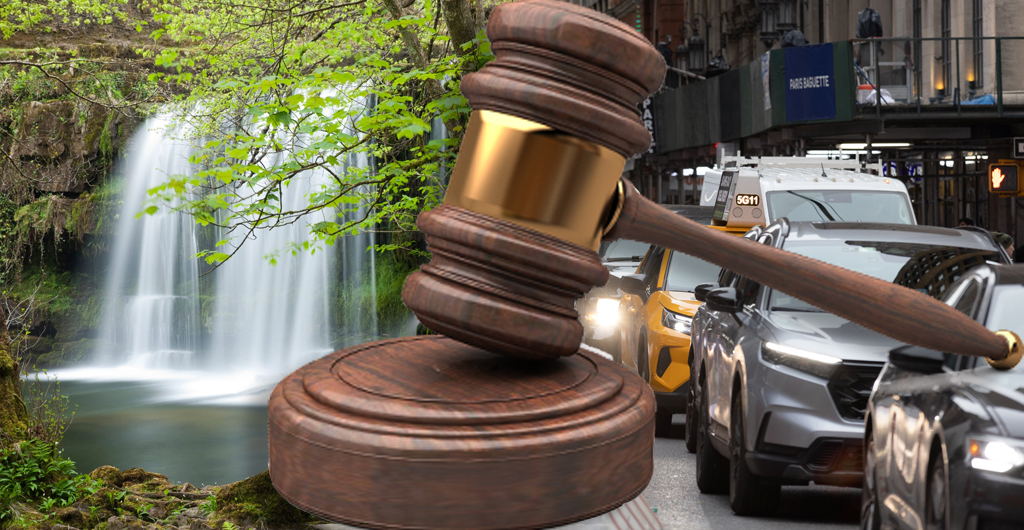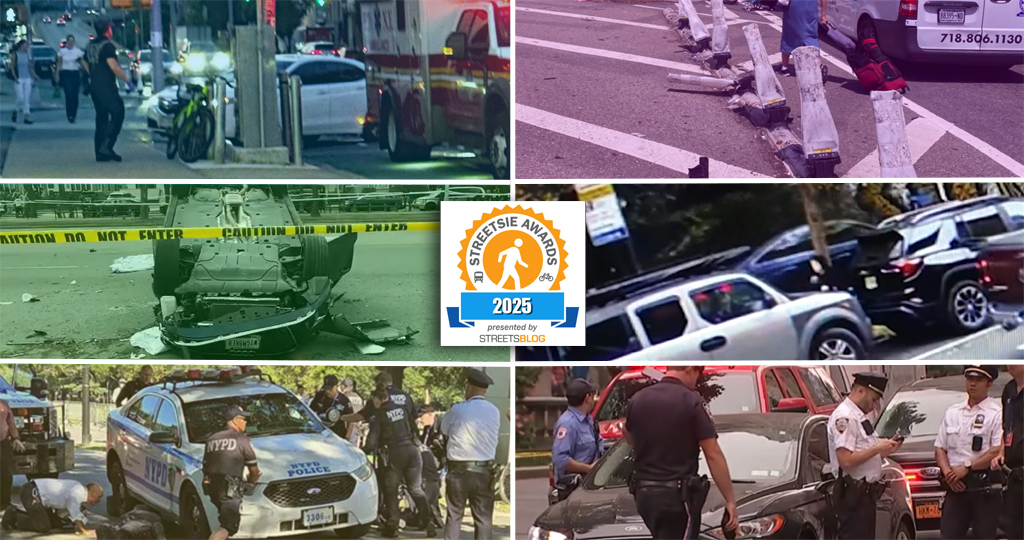The state's environmental agency must begin the rule-making process to follow New York’s landmark climate law, thanks to a new state court ruling.
A State Supreme Court Judge Julian Schreibman ruled late last month that the state Department of Environmental Conservation must start issuing the necessary rules to remain in compliance with the Climate Leadership and Protection Act, which passed in 2019 with the goal of reducing pollution and New Yorkers' reliance on gas-guzzling vehicles.
Environmentalists hailed the ruling as a “major victory for the climate movement.”
“The decision confirms what we have stated over and over: The governor must comply with the crystal clear words of the climate law stating that the [state Department of Environmental Conservation] must issue regulations ensuring that New York dramatically cuts greenhouse gas emissions,” said Bob Cohen, policy director for Citizen Action of New York, one of the plaintiffs.
The goal of the Climate act was to put New York on a path to lower its greenhouse gas emissions and invest in renewable energy sources and infrastructure. The law specified that the state must shrink emissions 40 percent of its greenhouse gas levels measured in 1990 by the end of the decade, then slash that further to an 85-percent reduction by 2050.
Yet the rollout of new climate rules has been inexplicably slow. The regulations will feature a new cap-and-invest program, a market-based carbon pricing system mandating businesses to pay the state if they spewed more pollutants than their allotment.
But the environmental agency's rules would also have a potentially profound effect on other state agencies, which are also bound by the law and will therefore need to lower carbon emissions by, for example, electrifying fleets of buses and vehicles, installing EV charging stations, and prioritizing transit, walking, and biking in future plans.
The state missed a deadline to put its climate rules in place in 2024, but was on track to release them publicly earlier this year.
Instead, Gov. Hochul paused the process in January, saying agency officials needed more time to develop it.
That prompted environmental organizations including Citizen Action, WE ACT For Environmental Justice, and the Sierra Club to sue in March.
Attorney General Letitia James, whose office represents state agencies, argued that the Department of Environmental Conservation believed that issuing new rules on time would be “complicated” and could lead to higher energy costs for New Yorkers. (The DEC also wrote in court filings that cap-and-invest remained an “option” without committing to the program long-term, and forecasted the state would meet its emissions goals by 2036, not 2030.)
Schreibman wasn’t convinced, setting a deadline for rule promulgation of Feb. 6, unless the legislature modifies the law before then.
“Faced with this mandate. DEC does not have the discretion to say no or to decide that it has the authority to choose not to follow the express legislative directive at issue,” Schreibman wrote in his October 24 ruling. “It is clear that what DEC could not do is unilaterally determine the course of New York's environmental policy by refraining from issuing legally-mandated regulations.”
Hochul told New York Focus she would consider appealing the decision and working with the legislature to revise the climate law. A DEC spokeswoman said they were currently reviewing the decision.
With only two months left in 2025, Governor Hochul is running out of time to uplift construction workers on brownfield remediation projects.
— New York State Laborers' Tri-Funds (@NYSTriFunds) November 3, 2025
Let's get this done and empower workers across New York! pic.twitter.com/GCdE8KBOpm
Other agencies are waiting to move forward once the lawsuit is resolved. The most dramatic shift could occur at the state Department of Transportation, which is responsible for building and maintaining New York’s highways, bridges, and roads.
In recent years, the agency has sought to reduce the total number of miles that all vehicles travel across the state, discourage idling, and encourage carpooling through high-occupancy vehicle lanes.
But the numbers are moving in the wrong direction. The amount of driving has risen in the state’s urban areas since the pandemic while the state DOT estimates that vehicle travel in New York could increase by 23 percent by 2040. The transportation sector currently contributes 26 percent of the state’s total carbon emissions, a 2024 DEC report said, a figure that could increase if New York’s driving habits continue.
New climate rules will give the agency an opportunity to reset its priorities. A new bill introduced by Brooklyn State Senator Andrew Gounardes requiring the agency to set a goal of lowering the total number of vehicle miles traveled by 20 percent by 2050 and assess VMT before approving any highway expansion projects could help too (A state DOT spokesman said they would not comment on pending litigation).
Riders Alliance spokesman Danny Pearlstein said agencies must work together to cut carbon pollution in compliance with the law.
“Reducing emissions means giving New Yorkers more ways of getting around and moving away from the car-dependent landscape that we’ve built,” he said. “We need to reform the [state DOT] around planning to meet the access and mobility needs of all New Yorkers including the folks who don’t drive.”






